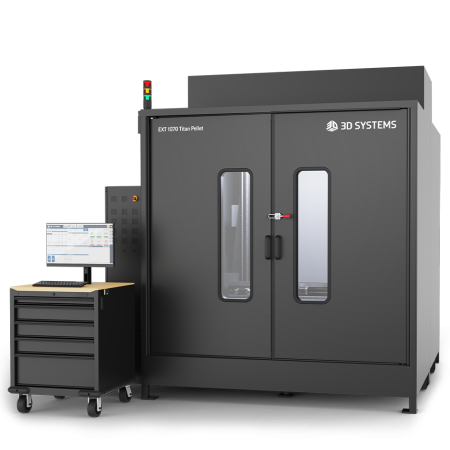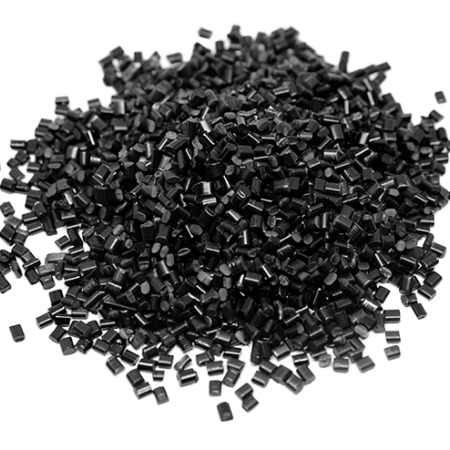Astech, Alloy Steel Technologies, Inc., a steel and iron sand casting foundry headquartered in Vassar, Michigan, has spent the last two decades leveraging technology, including pellet-extrusion additive manufacturing, to transform their business.
A 21st Century Foundry
Foundries in the United States face a host of challenges including increased foreign competition, price and lead time pressures, supply chain issues, and scarcity of skilled laborers. Astech, Alloy Steel Technologies, Inc., a steel and iron foundry in Vassar, Michigan has taken the challenges head-on, investing in innovation such as additive manufacturing (AM) to achieve a competitive advantage.
Founded in 1987, Astech turned a technological corner with a push for more forward-thinking solutions with the appointment of Alan Bukach, a visionary new company president, in 2005. Bukach has worked with his team to transform the business into a truly modern foundry focused on innovation, safety, and profitability.
Astech’s facility in Vassar, Michigan, USA.
Embracing Change
Astech’s leadership identified the business advantages of bringing pattern production in-house with additive manufacturing and in 2018 invested in a trio of medium-format filament extrusion (FFF) 3D printers. While the printers quickly proved their value for small and medium-format patterns, the company lacked an in-house AM solution for patterns larger than 24-inches in any dimension.
Tasked with finding a large-format printer that would meet their needs, Astech’s Engineering Manager Bob Helwer dove into extensive online research and attended several AM tradeshows. None of the systems he considered seemed like a great fit until he attended a presentation at the American Foundry Society’s Additive Manufacturing conference in the fall of 2018. The presenter was Clay Guillory, founder of Titan Robotics, maker of large, industrial pellet-extrusion 3D printers (acquired by 3D Systems in 2022).
“I couldn’t believe how fast [the printer] was and was sure that the video had been sped up until Clay mentioned in his presentation that the video was recorded in real-time,” recalled Helwer. The speed and economy of printing directly from pellets represented a clear advantage over competing filament-based systems he had researched.
Astech Engineering Manager Bob Helwer holds a pattern printed on the company’s EXT Titan Pellet 3D printer.
Helwer requested samples from several large format 3D printer manufacturers to compare quality and performance. After validating two sample pattern prints and visiting the Titan manufacturing facility in Colorado Springs, CO, Astech purchased a Titan Robotics Atlas (now called EXT 1070 Titan Pellet) 3D printer which was installed in August of 2020. Thanks to its large print volume, industrial heated print chamber and proven pellet extrusion system, it rapidly became a key part of their pattern production process.
Traditional patternmaking for sand casting involves cutting the desired shape from wood, red board, or aluminum. Typically, the design is cut using CNC equipment, though some patternmakers still use paper drawings and manual cutting tools. Astech was once reliant on specialty pattern shops using traditional methods, generally waiting 4-6 weeks for delivery of a pattern. By bringing pattern production in-house with AM, they’ve cut that time to just 3-10 days.
Leading the Way
Positive ROI was achieved within 18 months of installation and four years later, Astech’s Titan printer is still going strong. The company relies on carbon fiber filled ABS pellets for their patterns, a proven material for foundry applications with excellent durability. Helwer reports some of his 3D printed patterns have created thousands of impressions with no signs of wear. Using a 1mm nozzle at relatively fine resolution settings allows them to maintain reasonably high print speeds while minimizing necessary post processing before use.
Today, Astech 3D prints roughly 90% of their patterns. “In-house additive manufacturing has become our ‘secret sauce.’ It gives us the advantage over our competitors when it comes to tooling price, accuracy, speed of production, and the ability to modify existing jobs with lightning-fast turnaround times,” said Helwer. Indeed, the speed and cost advantages of additive manufacturing have enabled Astech to grow, boost their profitability, and continue delivering high quality cast products to their customers.
The 3D printed CF ABS pump casing pattern painted with mold release and mounted in a flask, ready to be filled with no-bake molding sand.
The massive pump casing core, produced with 3D printed core boxes.
Astech employees pour molten steel into a sand mold produced with 3D printed patterns.
An Astech employee cuts gating from the cast pump casing.

